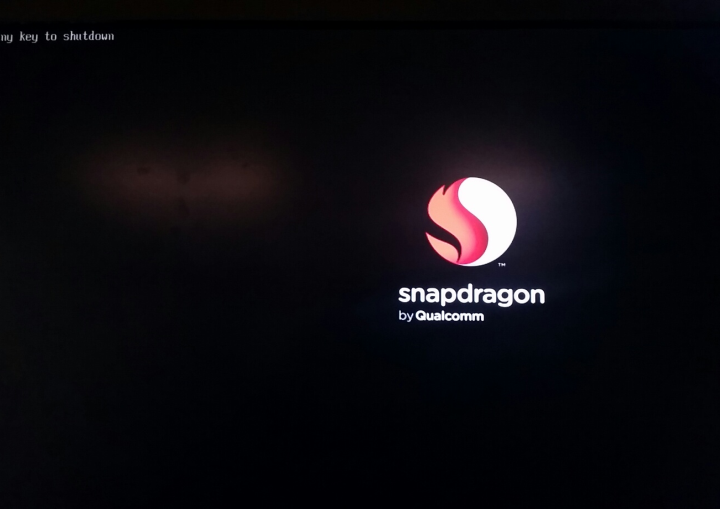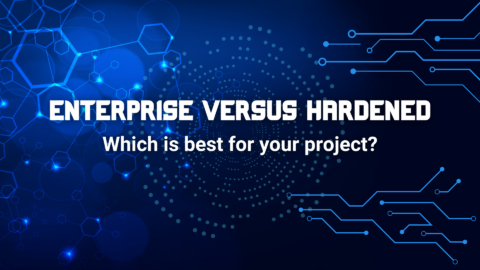
The Advantages of a Wi-Fi Pre-certified SOM
Introduction
Most System-On-Modules (SOM) now available include some kind of wireless connectivity, most often in the form of Wi-Fi and Bluetooth. Despite the low cost and ubiquity of Wi-Fi and Bluetooth connectivity, the required certification process for these radios is very complex, expensive, and time consuming. For someone developing a new product based around a SOM there are many advantages to choosing a production-ready SOM that is pre-certified with a modular radio transmitter certification.
This article provides some background information on the FCC modular certification process, as well as it’s requirements and limitations. It also describes the advantages for product designers and provides an overview of Intrinsyc’s SOMs that have modular certification.
Background on FCC Modular Certification
The FCC and some other jurisdictions (see later section below) have a mechanism to certify an unlicensed radio transmitter as a self-contained transmitter module that is meant to be integrated into a host device (usually an end-user product). This allows the transmitter module to be tested and certified only once and then integrated into an unlimited number of different products, whether by the same manufacturer or different manufacturers. Once the transmitter module has a modular certification it receives its own FCC ID number which can be used for any product FCC certification by listing the module FCC ID on the label along with the product’s FCC ID.
Since the modular certification only covers the radio transmitter, the product using the module still requires FCC testing and certification for non-intentional radiator emissions, just like electronic products without a radio transmitter. Compared to the intentional radiator emissions testing required for a radio transmitter, the non-intentional emissions testing is much less complex, less time consuming, and less expensive. For the product developer, using a pre-certified module means reduced NRE and a quicker time to market with a new product.
For those interested in the details of the FCC modular certification you can review the FCC documents listed in the references below.
Modular Certification Process
Due to the incredible complexity of today’s Wi-Fi and Bluetooth solutions, certification testing requires a lot of lab time to test every possible mode and frequency band of the radio transmitters. For a modern Wi-Fi/Bluetooth solution with 802.11a/b/g/n/ac plus Bluetooth classic and Bluetooth low energy the radio must be tested in many different modes with each mode also having multiple data rates to test. In addition, for each mode/data rate combination, it must be tested on the low, middle, and high channels. All these combinations must be tested to find the worst-case emissions for each mode and then these are measured and documented for the test report. This typically takes two to four weeks by an accredited lab to complete the testing and test report generation.
Following that the filing with FCC is done and after some waiting, often questions come back about the test report or application, requiring review and revisions. This process can take many weeks before the final certification is granted by the FCC. The total time is typically eight to ten weeks from first day in the lab until receiving the FCC certification.
The lab and filing fees for this process typically costs between $20,000 and $40,000, depending on the type of Wi-Fi – single-band, dual-band, ac modes, MIMO, etc. In addition, there is a significant effort required by the radio module manufacturer to provide support to the test lab and prepare all the required documentation for the FCC filing. This will require an engineer familiar with radio testing and certification issues.
Advantages of a Pre-certified SOM
So, the advantages of using a pre-certified SOM in your product design are:
- Save $20,000 to $40,000 in lab and certification fees
- No requirement for a radio certification expert on staff
- Save the labor costs associated with a certification engineer to support the testing and preparation of documentation
- Save time at the end of the product development process which means a faster time to market.
Modular Certification Requirements and Limitations
There are strict requirements imposed by the FCC on a radio transmitter module design in order to obtain a modular transmitter certification. These are described in detail in reference [1], and a few of them are discussed below.
The restrictions imposed by the FCC on a radio module design are all meant to keep the radio module operating within compliance no matter what type of host product it finds itself in. These are things like having power supply regulation on-board, using buffered data inputs, and containing the high frequency portions of the radio inside a shield, among other things. These requirements are meant to prevent a host device from having a detrimental effect on the transmitter module due to things like a noisy power source, incorrect data inputs, or radiated noise that could mix in the transmitter and cause extra spurious emissions.
One key thing to note is that these requirements are absolute for modular certification, whether the radio module needs them to function or not. The shield requirement, for example, is an interesting one because most modern Wi-Fi/BT chips are highly integrated and do not require a shield to function properly. Many would even pass FCC spurious emissions regulations without any kind of shield – yet the rules for the modular certification still require the RF portion to have a shield. This means that if you are comparing SOMs or any other type of radio transmitter module it is easy to see whether it has a shield or not. If it has no shield then it certainly cannot have a modular certification.
In addition to the requirements placed on the module manufacturer to obtain the modular certification, there are also certain restrictions placed on an “integrator” who is designing such a module into his host product. This means that a modular certification may not be the right solution for every product design, but due to the advantages described above, it is very worthwhile to try to make use of it.
One of the requirements on the module manufacturer is that they provide integrators with sufficient documentation describing these restrictions so that they can be sure that the module operates within compliance after it is integrated into the host product. The document must describe things such as the labelling requirements for the product and limitations on the type of antennas that can be used. The labelling requirements are quite straightforward, but the antenna limitations are more complex and warrant a more detailed discussion.
Antenna Restrictions
When a radio transmitter module is tested for modular certification the manufacturer must provide an antenna(s) to test the product with. They must also provide the antenna specifications including antenna type and maximum gain for each frequency band being used. The details of the antenna(s) used is included in the test report and FCC/IC applications. The modular certification is then only valid if the radio module is used with an antenna of the same type and equal or lower maximum gain as the antenna it was certified with.
A modular certification can include multiple different types of antennas if the certification testing is performed with the multiple antennas. This requires more testing time to perform measurements with each different antenna but will provide more flexibility to a product integrator using the module.
The details of the allowable antenna type(s) and maximum gain must be specified in the “Integrator’s Guide” document so that users of the radio module know what antenna(s) they can use to maintain a valid modular certification.
If the certified antenna options are not suitable for a specific product design there are two options for obtaining certification.
Option one is to not use the modular certification at all and do a complete certification at the product level. The product will then obtain its own FCC ID that includes the radio transmitter functionality and all the other FCC non-intentional emissions requirements too. This means that the complete set of radio tests must be done and most of the advantages of using a modular certified SOM will not be used. It will add considerable time and cost to the product certification process. The only advantage will be the knowledge that the SOM should be able to pass the certification testing so long as the antenna used does not have a higher gain than that used for the modular certification. If the antenna gain is higher the radio may fail certain tests and could require a reduction of transmit power to pass.
The other option is to add a new antenna type to the modular certification by applying for a “class 2 permissive change” (C2PC). This must be done by the owner of the modular certification and can then be used by any integrator that designs a product with the module. The process for this is to complete a limited set of testing with the new antenna to prove that it still passes the regulatory limits without any modification to the radio module and then apply for the C2PC to add the new antenna to the modular certification. This method requires less testing than the full certification and therefore costs less, although it is not insignificant.
Modular Certification in Other Jurisdictions
Although the FCC modular certification covers products sold in the United States, what about other parts of the world? The only country that has an equivalent system for transmitter modular certification is Canada. The body that governs this in Canada is called “Industry Canada” or IC and the certification has pretty well identical requirements to the FCC. The applications for both can be done with the same test report.
Unfortunately, most other parts of the world do not have anything like the FCC and IC modular certification. One other country that does have a similar process is Japan although the requirements are somewhat different than the FCC and IC.
Most other parts of the world require that the device be fully tested at the product level in order to obtain the required certification. That said, if a SOM has an FCC modular certification it provides some confidence that the radio part should pass other country’s regulations.
Intrinsyc’s Pre-certified SOMs
Intrinsyc Technologies manufactures and sells a wide range of SOMs with built-in Wi-Fi and Bluetooth connectivity and many of them are pre-certified with the FCC and Industry Canada as a modular radio transmitter. Below is a summary of Intrinsyc’s pre-certified SOMs at the time of publishing.
The Open-Q 820 SOM, 820 µSOM, 624A SOM, 212A SOM, and the Open-X 8M all include a pre-certified Wi-Fi/BT module.
The Open-Q 410 SOM includes a chip-on-board Wi-Fi/BT solution and has modular Wi-Fi/BT certification in North America as well as Japan.
The Open-Q 626 SOM also has a chip-on-board solution supporting dual-band 802.11ac Wi-Fi and BT and Intrinsyc recently obtained FCC/IC modular certification for this SOM.
Intrinsyc is currently in the process of obtaining FCC/IC modular certification for the Open-Q 835 µSOM and expects to complete this within the next two months.
Intrinsyc’s RF and Certification Services
Intrinsyc has experienced RF and certification engineers on staff to help customers with any antenna integration or certification issues they may have. We can provide complete product design services or consulting on antenna design, integration, and certification issues.
Author: Russell Fretenburg Product Manager, Intrinsyc Technologies
References
- FCC 996369 D01 Module Equip Auth Guide v02: https://apps.fcc.gov/kdb/GetAttachment.html?id=iL3CDxZIRRPc1UBc25AGsQ%3D%3D&desc=996369%20D01%20Module%20Certification%20Guide%20v02&tracking_number=44637
- FCC 996369 D02 Module Q and A v01: https://apps.fcc.gov/kdb/GetAttachment.html?id=vwCq9pC68KkaN6E7YFmWHA%3D%3D&desc=996369%20D02%20Module%20Q&A%20v01&tracking_number=44637
- FCC Part 15.212: https://www.gpo.gov/fdsys/pkg/CFR-2009-title47-vol1/pdf/CFR-2009-title47-vol1-sec15-212.pdf
- FCC part 15.247: https://www.gpo.gov/fdsys/pkg/CFR-2013-title47-vol1/pdf/CFR-2013-title47-vol1-sec15-247.pdf


